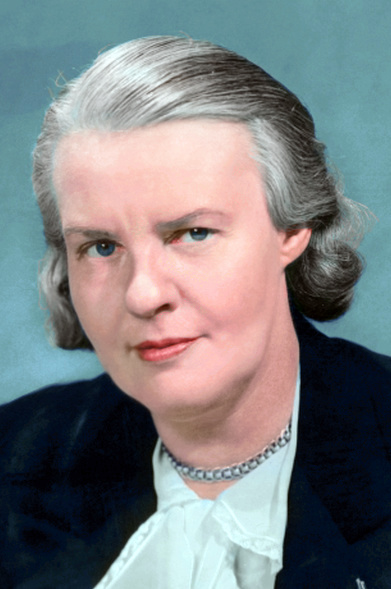The Evening Star (March 6, 1946)

ON THE RECORD —
There is no mystery about Soviet policy
By Dorothy Thompson
In Sen. Vandenberg’s speech he asked, “What is Russia up to?” He asserted, “Russia is a mystery.” But what the Soviet Union is up to has been increasingly clear ever since the Yalta Conference. It is up to realizing, as far as possible, its aims since the 1918 revolution: The undermining or overthrow of every other social order and unification of the world under the Red Star.
During the war we had many reasons for believing that Stalin for the sake of enduring friendly relations between the great powers had either abandoned that aim or was prepared to leave its fulfillment to history without active assistance of the USSR. After the attack on Russia, Stalin declared his allegiance to the Atlantic Charter. The Third International was formally dissolved and Communist parties everywhere readjusted their previous line. Mr. Litvinov, in a speech in New York, envisioned a postwar reconciliation between the Communist and capitalist worlds through mutual modifications of program.
Hopes were encouraged that the 1937 constitution would be put into real practice in Russia and the Russian peoples extended as a reward for their unexampled sacrifices the civil liberties which were the fruit of the western 18th century revolutions. Most prognosticators anticipated a general postwar turn to the left, with forms and degrees of socialism compatible with the circumstances and majority opinion of the various countries.
Whatever suspicions the Soviets might previously have entertained were removed, we thought, by the demonstrations of utter fidelity with which Britain and the United States observed the coalition.
![]()
These, among other things, included the immediate British rejection of the Hess mission, offering to guarantee the British Empire in return for benevolent neutrality toward a war against Russia – a reversal of the up to then Russian role; they included shipments of lease-lend with absolutely no strings attached, amounting to nine billion dollars or a quarter of the Soviet war budget.
All questions of prestige were laid aside in an effort to dispel Soviet “distrust.” However sinister the Munich pact may have seemed to Russia, it was certainly more than canceled by the Russo-German pact, which gave the green light to Hitler for the war against the west, made the Soviets for nearly two war years Hitler’s silent partners and turned Communists in all countries fighting Hitler into defeatists and saboteurs.
But by the late winter of 1944, when it was apparent that the German armies could not long resist, Soviet policy changed, and, after Yalta, obviously. No one not politically deaf, dumb and blind, or utterly ignorant of Soviet and Comintern history, could deny the evidence.
Soviet policy, proceeding without effective opposition, was to capture and integrate into its own economic and power complex Eastern Europe from the Baltic to the Adriatic, either by annexation, Quisling governments or Popular Front governments without effective guarantees for the equal participation of non-Communist parties.
Soviet policy was to enter the Far Eastern war at the last moment and play for a dominant position in the Far East.
Soviet policy was to disintegrate Western Europe, beginning with Germany, in order to lay it open to revolutionary conquest when the German and European standard of living should have fallen to a sub-Balkan level.
![]()
Soviet policy was to divide the United States from Britain by reviving the slogan of the Russo-German pact, of the war for imperialism, work for the collapse of the European Far Eastern empires and fall heir to their disintegrating parts.
Soviet policy was to put Russia in such a position in Iran and Turkey as to bring pressures on the Middle East to which weak governments would yield without any premature Soviet act of open aggression.
Comintern policy was to support such revision of the French constitution as would give France the weakest possible government.
Comintern policy was to agitate for the withdrawal of American and British troops from Europe and Asia.
Comintern policy was to fan every social disorder in non-Communist countries with a view to producing internal chaos.
In short, Soviet and Comintern policy is revealed to be the realization of Hitler’s power aim, and by all of Hitler’s methods short of war: to dominate the Eastern Hemisphere, divide Great Britain, the United States and France, and undermine their societies from within.
And every British and American agreement contributed to its peaceful accomplishment, pre-eminently the insane “peace” of Potsdam, the visit to Canossa of Secretary Byrnes after the failure of London, and the tongue-tied dismay of American journalists fearful of rocking the boat.
There is no longer any mystery about Soviet policy. The mystery is how, step by step, American and British leadership should have made decisions or interim concessions, the probable results of which should have been obvious to any logical mind.